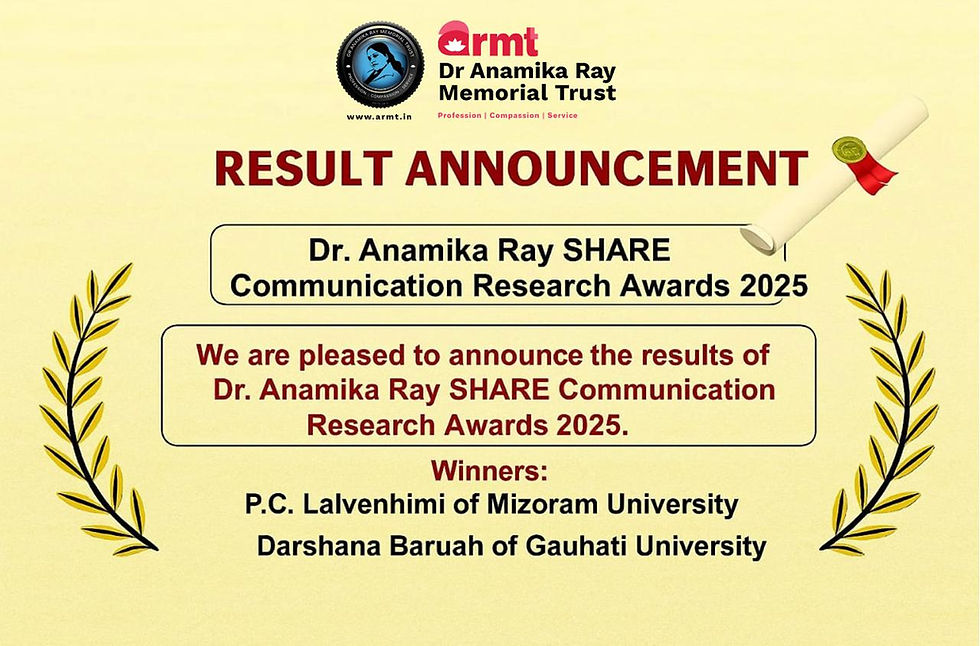4th Dr. Anamika Ray National Media Lecture held.Government Educational Broadcasting in India failed
- Ankuran Dutta

- Mar 1, 2021
- 2 min read

Dec 30, 2020: Government educational broadcasting in India have failed, though it still has time to materialize its programme through both offline and online mode – This is said by Dr. R. Sreedher in the 4th Dr. Anamika Ray National Media Lecture held on Wednesday.
“Government educational broadcasting like that of NCERT have failed to reach out the students as it lacks both in medium and content. In this digital age, bandwidth must become one of the basic necessities; but design must also be developed in offline mode, which is only possible through community radio”, said Sreedher, the Former Director of Commonwealth Educational Media Center for Asia (CEMCA).
Dr. R. Sreedher, who is an Emeritus Professor of Apeejay Institute of Mass Communication (AIMC) delivered the lecture on the topic “What hindered its flight: Educational Broadcasting in India” organized by Dr. Anamika Ray Memorial Trust (ARMT) through a link created in Zoom platform.
Prior to this, the first Dr. Anamika Ray National Media Lecture was delivered by Prof. Mohan Jyoti Dutta of National University of Singapore, followed by Dr Jatin Srivastava of Ohio University, USA and Dr. Pallavi Guha of Towson University, USA and formerly journalist of BBC (UK).
Dr. Sreedher has been working on educational broadcasting in the country for the last five decades, who was also the founder of India’s Educational Television – ‘Gyan Darshan’ and India’s Educational Radio - ‘Gyan Vaani’.
Sreedher added that the fault is not in technology, but there are shortcomings in development of the educational programmes. He further emphasized on the content of the programmes which are not upgraded and hence they failed. “Need-based research for development of instructional and interactional educational programmes is required through community involvement”, said Sreedher.

The Lecture was formally inaugurated by Professor Madhab C Sarma, Chairperson of the Trust and Rajat Baran Mahanta, Vice Chair of the Trust summarized the entire lecture and extended the Vote of Thanks.



Comments